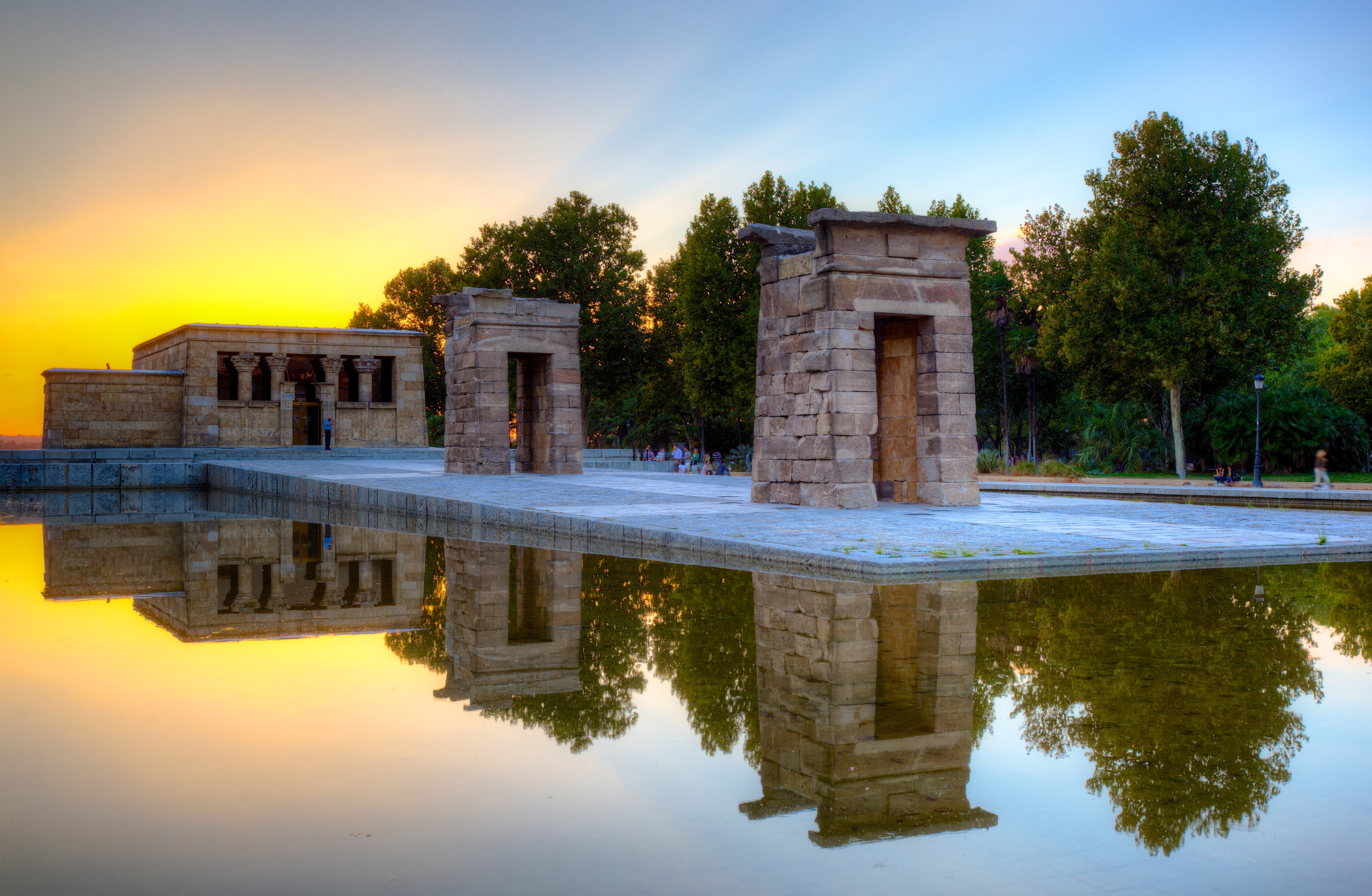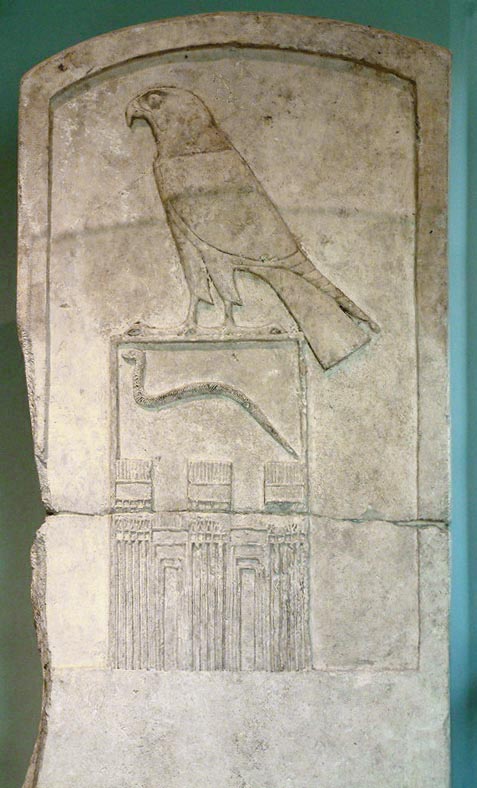|
Adikhalamani
__NOTOC__ Adikhalamani was a Kushite King of Meroe dating to the 2nd century BCE. Adikhalamani was the successor of King Arqamani and was later succeeded by a king whose name has only partially survived: (...)mr(...)t. He is said to be contemporary with an Egyptian revolt dated to ca. 207-186 BCE. During this revolt a ruler, Horwennefer (who may have been a Nubian) took control of Thebes and revolted against Ptolemy IV Philopator. The revolt ended ca. 186 BCE when Ankhwennefer (his successor or more likely Horwennefer with a different nomen) was captured and executed. by Chris Bennett, retrieved June 2, 2010 Titles *[...More Info...] [...Related Items...] OR: [Wikipedia] [Google] [Baidu] |
Temple Of Debod
The Temple of Debod ( es, Templo de Debod) is an ancient Egyptian temple that was dismantled as part of the International Campaign to Save the Monuments of Nubia and rebuilt in the center of Madrid, Spain, in Parque de la Montaña, Madrid, a square located Calle de Irún, 21–25 Madrid. Architecture and artwork The shrine was originally erected south of AswanDieter Arnold, Nigel Strudwick & Sabine Gardiner, The Encyclopaedia of Ancient Egyptian Architecture, I.B. Tauris Publishers, 2003. p.64 in Nubia, very close to the first cataract of the Nile and to the great religious centre in Philae dedicated to the goddess Isis. In the early 2nd century BC, Adikhalamani (Tabriqo), the Kushite king of Meroë, started its construction by building a small single-room chapel dedicated to the god Amun. It was built and decorated in a similar design to the later Meroitic chapel on which the Temple of Dakka is based. Later, during the reigns of Ptolemy VI, Ptolemy VIII, and Ptolemy ... [...More Info...] [...Related Items...] OR: [Wikipedia] [Google] [Baidu] |
List Of Monarchs Of Kush
This is an incomplete list for rulers with the title of Qore (king) or Kandake (queen) of the Kingdom of Kush. Some of the dates are only rough estimates. While the chronological list is well known, only a few monarchs have definite dates. These include those leaders who also ruled Ancient Egypt and those who ruled during famous invasions or famous trade expeditions. The others are based on estimates made by Fritz Hintze. The estimates are based on the average length of the reigns, which were then shortened or lengthened based on the size and splendour of the monarch's tomb, the assumption being that monarchs who reigned longer had more time and resources to build their burial sites. An added complication is that in recent years, there have been disputes as to which monarch belongs to which tomb. Dates are definite and accurate for the Kushite rulers of the Twenty-fifth Dynasty of Egypt, when Egypt was invaded and absorbed by the Kushite Empire. The dates are also certain ... [...More Info...] [...Related Items...] OR: [Wikipedia] [Google] [Baidu] |
Arqamani
Arqamani (also Arkamani or Ergamenes IITörök (2008), p. 393) was a Kushite King of Meroë dating from the late 3rd to early 2nd century BCE. Biography It is believed that Arqamani ruled in Meroë at the time of the Egyptian revolt of Horwennefer against Ptolemy IV Philopator (reign 221–204 BC). He is attested by a number of inscriptions and reliefs from Kalabsha, Philae and the temple of Dakka. In the latter locality, he usurped some donation inscriptions originally inscribed for Ptolemy IV. He was buried in a pyramid in Meroë now known as Beg. N 7. Arqamani took an elaborate ancient Egyptian royal titulary (see infobox) which likely reflects his control above the reconquered Lower Nubia and its inhabitants. He also took mortuary names: the mortuary Horus name is ''Kashy-netjery-kheper'', meaning "The Kushite whose coming into being is divine", while his nomen is accompanied by the epithet ''Ankhdjet-meriaset'', meaning "Given life, beloved of Isis", as well as ''Mklt ... [...More Info...] [...Related Items...] OR: [Wikipedia] [Google] [Baidu] |
Ptolemy IV Philopator
egy, Iwaennetjerwymenkhwy Setepptah Userkare Sekhemankhamun Clayton (2006) p. 208. , predecessor = Ptolemy III , successor = Ptolemy V , horus = ''ḥnw-ḳni sḫꜤi.n-sw-it.f''''Khunuqeni sekhaensuitef'' The strong youth whose father has allowed him to appear , nebty = ''wr-pḥtj mnḫ-jb-ḫr-nṯrw-nbw nḏtj-n-ḥnmmt''''Werpekhty menekhibkhernetjerunebu nedjtyenkhenmemet'' Whose might is great, whose heart is beneficial with all the Gods, who is the savior of mankind , nebty_hiero = wr:r-F9:F9-mnx:D2-x:r-nTr-Z2:nb-Aa27-t*y:A40-n:N8-A1:Z2 , golden = '' swḏꜢ-bꜢḳt sḥḏ-gsw-prw smn-hpw-mi ḏḥwti-ꜤꜢ-ꜤꜢ nb-ḥbw-sd-mi-ptḥ-tꜢ-ṯnn ity-mi-rꜤ''''Sewedjabaqet sekhedjgesuperu semenhepumi Djehutia'a nebkhabusedmiptah-tatjenen itymire'' Who has kept Baqet safe by illuminating the temples and establishing laws like the twice-great Thoth, possessor of Sed festivals like Ptah Tatenen and a sovereign like Ra , golden_hiero = z: ... [...More Info...] [...Related Items...] OR: [Wikipedia] [Google] [Baidu] |
Hugronaphor
Horwennefer ( egy, ḥr-wnn-nfr "Horus- Onnophris"; grc, Άροννώφρις ) was an Upper Egyptian who led Upper Egypt in secession from the rule of Ptolemy IV Philopator in 205 BC. No monuments are attested to this king but along with his successor Ankhwennefer (also known as ''Chaonnophris'' or ''Ankhmakis''Günther Hölbl, ''History of the Ptolemaic Empire'', Routledge, 2000, pp. 155ff.) he held a large part of Egypt until 186 BC. A graffito dating to about 201 BC on a wall of the mortuary Temple of Seti I at Abydos, in which his name is written (), is an attestation to the extent of his influence. He appears to have died before 197 BC. The Abydene graffito, one of the few documents remaining from his reign, is written in Egyptian using Greek letters, the oldest testimony of a development which would end in the Coptic script The Coptic alphabet is the script used for writing the Coptic language. The repertoire of glyphs is based on the Greek alphabet augment ... [...More Info...] [...Related Items...] OR: [Wikipedia] [Google] [Baidu] |
Thebes, Egypt
, image = Decorated pillars of the temple at Karnac, Thebes, Egypt. Co Wellcome V0049316.jpg , alt = , caption = Pillars of the Great Hypostyle Hall, in '' The Holy Land, Syria, Idumea, Arabia, Egypt, and Nubia'' , map_type = Egypt , map_alt = , map_size = , relief = yes , coordinates = , location = Luxor, Luxor Governorate, Egypt , region = Upper Egypt , type = Settlement , part_of = , length = , width = , area = , height = , builder = , material = , built = , abandoned = , epochs = , cultures = , dependency_of = , occupants = , event = , excavations = , archaeologists = , condition = , ownership = , management = , public_access = , website = , notes = , designation1 = WHS , designation1_offname = Ancient ... [...More Info...] [...Related Items...] OR: [Wikipedia] [Google] [Baidu] |
Ankhmakis
Ankhwennefer ( egy, ꜥnḫ-wnn-nfr "May Onnophris live"; grc, Χαόννωφρις ), also known as Ankhmakis,Günther Hölbl, ''History of the Ptolemaic Empire'', Routledge, 2000, pp. 155ff. was the successor of Horwennefer, a rebel ruler who controlled much of Upper Egypt during the reigns of Ptolemies IV and V. His rule lasted from approximately 200 to 186 BC. Reign Ankhwennefer succeeded Horwennefer as pharaoh in Upper Egypt between 201 and 199; the exact date remains unclear. His background is also unknown, but he might have been a relative of Horwennefer. An inscription at Philae hints at Ankhwennefer being Horwennefer's son. In any case, Ankhwennefer encountered a difficult situation at the start of his reign. Horwennefer had been killed in battle and the rebels lost their capital of Thebes either shortly before or after Ankhwennefer's accession. The Ptolemaic army garrisoned not just Thebes, but even the town of Syene further to the south. According to Egyptol ... [...More Info...] [...Related Items...] OR: [Wikipedia] [Google] [Baidu] |
Ancient Egyptian Royal Titulary
The royal titulary or royal protocol is the standard naming convention taken by the pharaohs of ancient Egypt. It symbolised worldly power and holy might, also acting as a sort of mission statement for the duration of a monarch's reign (although sometimes it even changed during the reign). The full titulary, consisting of five names, did not come into standard usage until the Middle Kingdom but remained in use as late as the Roman Empire. Origins In order that the pharaoh, who held divine office, could be linked to the people and the gods, special epithets were created for them at their accession to the throne. These titles also served to demonstrate one's qualities and link them to the terrestrial realm. The five names were developed over the centuries beginning with the Horus name. This name identified the figure as a representative of the god Horus. The Nebty name was the second part of the royal titular of Upper and Lower Egypt. This name placed the king under the protect ... [...More Info...] [...Related Items...] OR: [Wikipedia] [Google] [Baidu] |
Sudan Meroe Pyramids 2001 N09
Sudan ( or ; ar, السودان, as-Sūdān, officially the Republic of the Sudan ( ar, جمهورية السودان, link=no, Jumhūriyyat as-Sūdān), is a country in Northeast Africa. It shares borders with the Central African Republic to the southwest, Chad to the west, Egypt to the north, Eritrea to the northeast, Ethiopia to the southeast, Libya to the northwest, South Sudan to the south and the Red Sea. It has a population of 45.70 million people as of 2022 and occupies 1,886,068 square kilometres (728,215 square miles), making it Africa's third-largest country by area, and the third-largest by area in the Arab League. It was the largest country by area in Africa and the Arab League until the secession of South Sudan in 2011, since which both titles have been held by Algeria. Its capital is Khartoum and its most populated city is Omdurman (part of the metropolitan area of Khartoum). Sudan's history goes back to the Pharaonic period, witnessing the Kingdom of Kerma ... [...More Info...] [...Related Items...] OR: [Wikipedia] [Google] [Baidu] |
Pyramids Of Meroe (Begarawiyah)
A pyramid (from el, πυραμίς ') is a structure whose outer surfaces are triangular and converge to a single step at the top, making the shape roughly a pyramid in the geometric sense. The base of a pyramid can be trilateral, quadrilateral, or of any polygon shape. As such, a pyramid has at least three outer triangular surfaces (at least four faces including the base). The square pyramid, with a square base and four triangular outer surfaces, is a common version. A pyramid's design, with the majority of the weight closer to the ground and with the pyramidion at the apex, means that less material higher up on the pyramid will be pushing down from above. This distribution of weight allowed early civilizations to create stable monumental structures. Civilizations in many parts of the world have built pyramids. The largest pyramid by volume is the Great Pyramid of Cholula, in the Mexican state of Puebla. For thousands of years, the largest structures on Earth were pyra ... [...More Info...] [...Related Items...] OR: [Wikipedia] [Google] [Baidu] |




